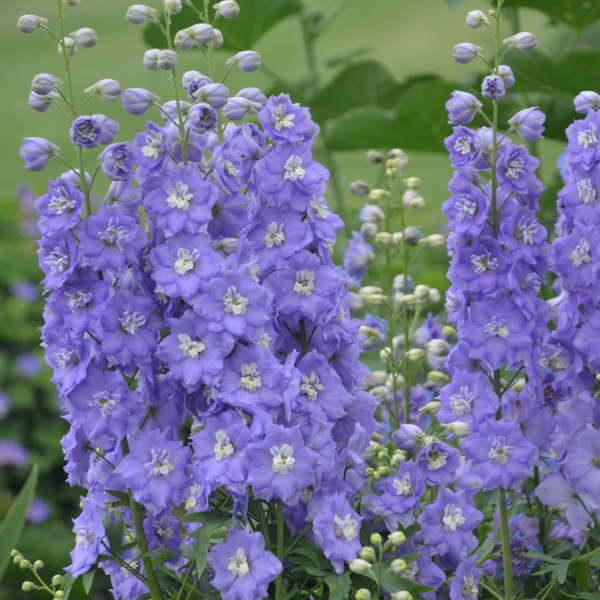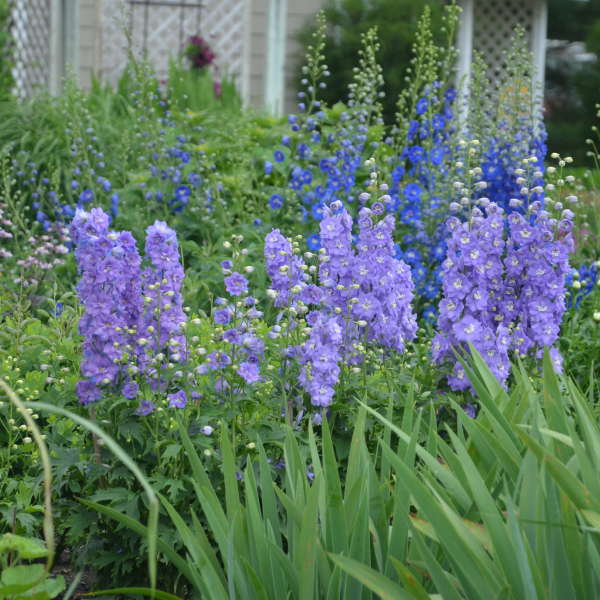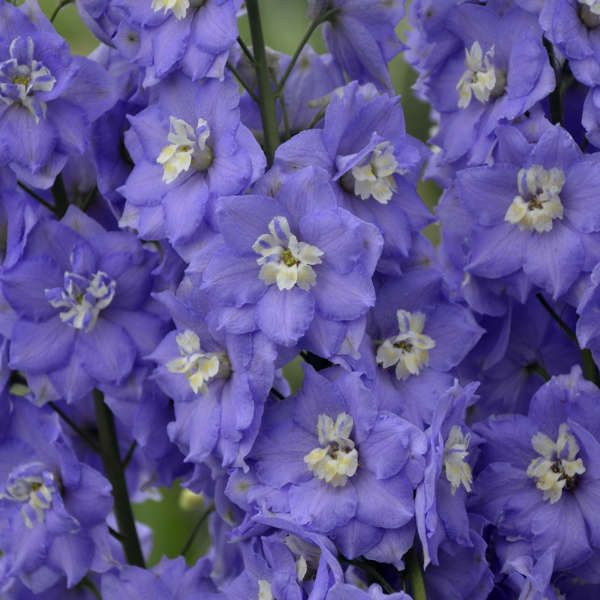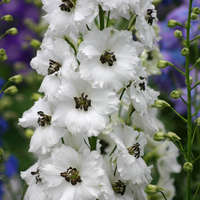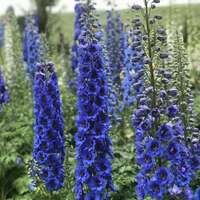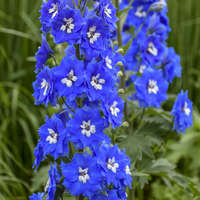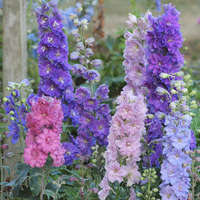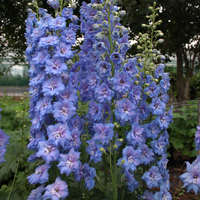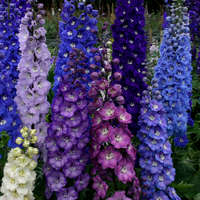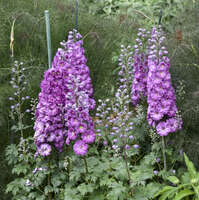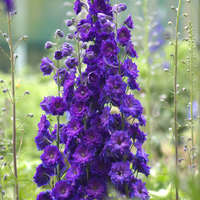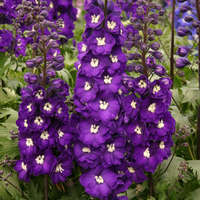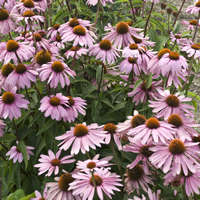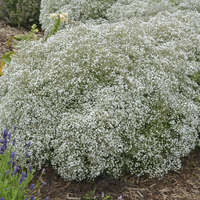Delphinium 'Lilac Ladies'
New Zealand Delphiniums
Common Name: Hybrid Bee Delphinium
‘Lilac Ladies’ is a blooming machine! Her first set of clear lilac purple flowers with lilac and white striped central bees will reach 3-4 feet tall in early summer. It’s a good idea to deadhead those first blooms once they are spent as it will quickly promote a heavy crop of secondary flowers on smaller stems shortly after the first round is finished. In New Zealand where it was developed, it produces three rounds of bloom; in the Midwest you can expect at least two.
Standing 3-4’ tall, this plant is perfect for the middle of the border.
The English hybrid type of delphiniums are bred by New Zealand Delphiniums and are hand crossed to produce the highest quality seed. These F1 hybrids have excellent form, strong stems, and a vigorous growth habit. They were selected for their improved tolerance of heat and humidity, while retaining their cold hardiness.
